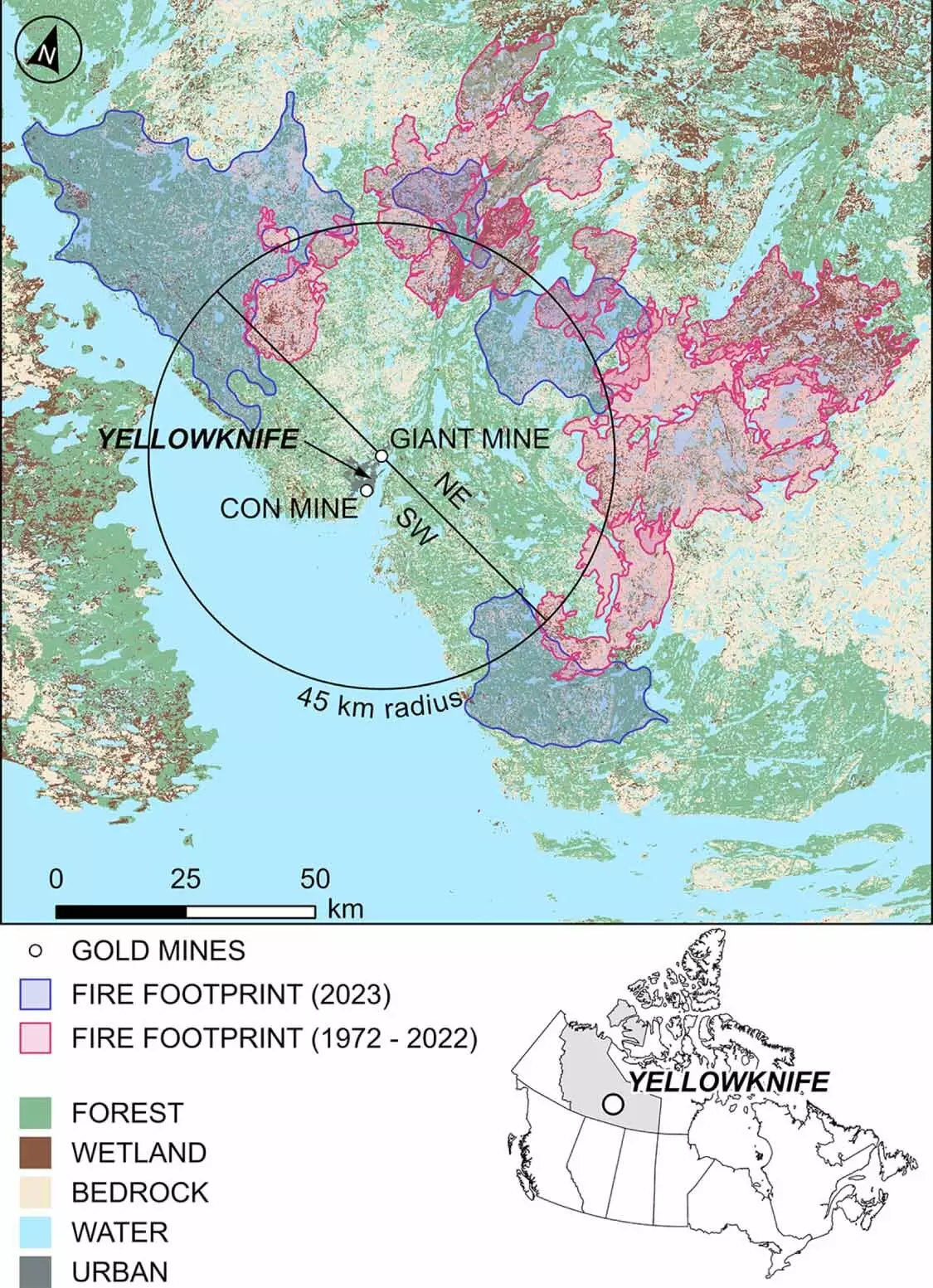The 2023 wildfire season in Canada has etched itself into history as an unprecedented phenomenon, marking a catastrophic chapter not just for the environment but for public health. An alarming study from researchers at the University of Waterloo and Nipissing University highlights the complex and dangerous interplay between wildfires and mining history, particularly around Yellowknife in the Northwest Territories. In a striking revelation, the research estimated that four specific wildfires in this mine-impacted region could have released an astonishing 69 to 183 tonnes of arsenic into the atmosphere, potentially contributing to nearly half of the global arsenic emissions from wildfires this year. This shocking statistic sheds light on a much larger and more troubling trend: the intersection of wildfire risk and industrial contamination.
The Arsenic Dilemma
Arsenic is not merely an abstract chemical; it embodies a harsh reality for communities and ecosystems alike. The World Health Organization categorizes arsenic as a potent toxin linked to grave health conditions, including diabetes, cardiovascular diseases, various cancers, and even infant mortality. The implication that wildfires can transform this dangerous compound from soil reserves into the air we breathe underscores an urgent environmental crisis. The scorching flames of the 2023 season did not just devour forests and grasslands but also resurfaced a toxic legacy, one that was dormant in the ground, again raising the question of legacy contamination.
As climate change accelerates the number and intensity of wildfires, the potential for re-releasing toxins like arsenic into the environment takes on alarming dimensions. The researchers intriguingly point out that the dynamics of arsenic unleashing depend on fire intensity, soil composition, and the depth of burn—an intricate dance of variables that makes prediction and mitigation increasingly complicated.
Environmental and Health Implications
The ramifications of the 2023 fires go beyond mere statistics; they represent real threats to human health and environmental safety. Communities near contaminated sites like those around Yellowknife must grapple with heightened risks from the fires. Such areas are not unique to Northwestern Canada; many industrial sites across the globe are similarly at high risk, creating a ticking time bomb of environmental and human health hazards.
Dr. Owen Sutton’s remarks reveal a stark reality: the accumulation of pollutants from decades of mining has rendered landscapes particularly vulnerable to the whims of wildfire. But this should not merely prod us into a state of panic; instead, it should galvanize researchers, policymakers, and Indigenous communities to engage in a collaborative dialogue about the best approaches for wildfire management and environmental restoration.
Path Forward: An Urgent Call for Collaboration
The call for a multifaceted investigation into the interplay of wildfires, chemical emissions, and mining practices cannot be overstated. Dr. Colin McCarter emphasizes the need for a concerted effort combining wildfire science, chemistry, environmental studies, and public policy—a claim that should resonate across all spheres of governance. Each element contributes a vital piece to the puzzle, and without integration, potential mitigation strategies could flounder in bureaucratic silos or scientific isolation.
Furthermore, the involvement of Indigenous fire management practices could usher in innovative strategies rooted in long-standing ecological wisdom. These traditional practices offer a treasure trove of knowledge on fire stewardship that deserves to be integrated into modern fire management frameworks. In that way, we can counter the emerging risks not only to human health but also to the delicate ecosystems that can be easily thrown off balance by such catastrophic events.
Wetlands: The Silent Contaminators
A particularly disturbing finding from the study revolves around wetlands and their role in arsenic emissions. Wetlands are typically viewed as protective ecosystems, yet the researchers found them to be alarming reservoirs for toxic contaminants. Unlike forests that might limn the more visible transfer of pollutants, wetlands quietly store and release these substances when ignited, making them silent violators of public health in the grand scheme of wildfire hazards. The next logical step is to investigate the broader implications of contaminants sequestered in northern peatlands and the risk of heavy metals being unleashed alongside arsenic.
This multifaceted challenge will require nuanced and layered research efforts that not only quantify existing toxins but also assess potential future hazards. The ramifications of the 2023 wildfire season stretch far beyond the flames, beckoning a critical reassessment of our approach to both environmental protection and public health—a point that must not be lost as we navigate an increasingly volatile climate.


Leave a Reply